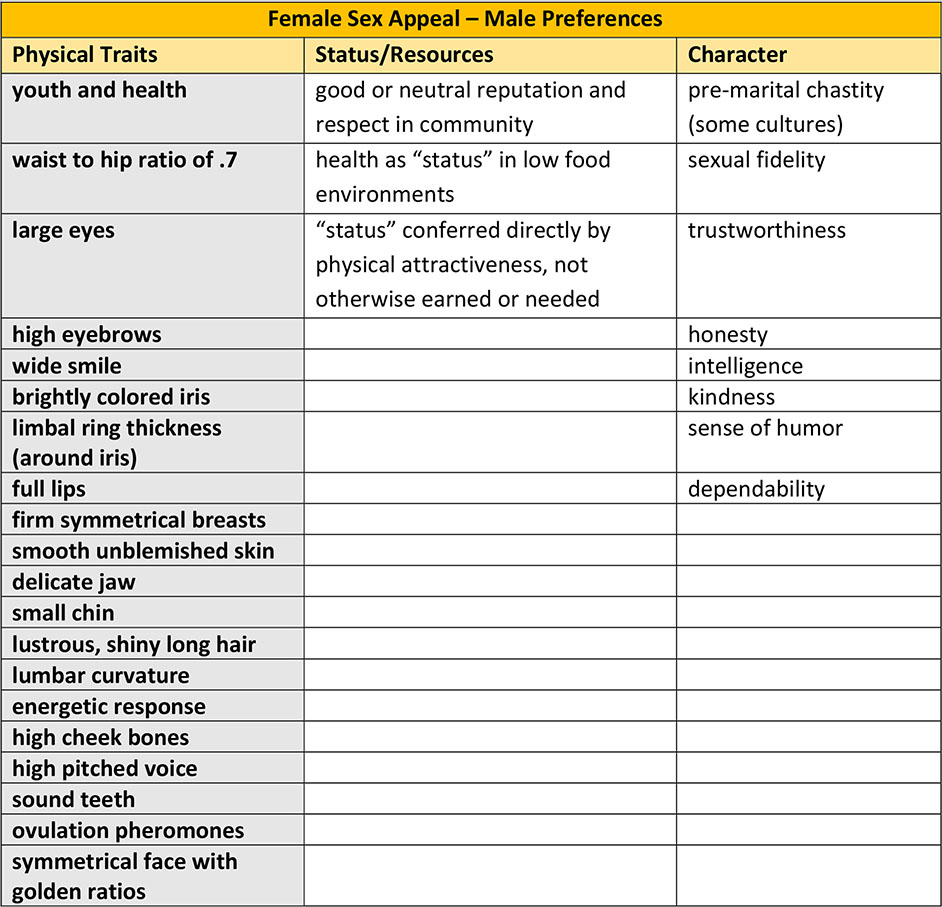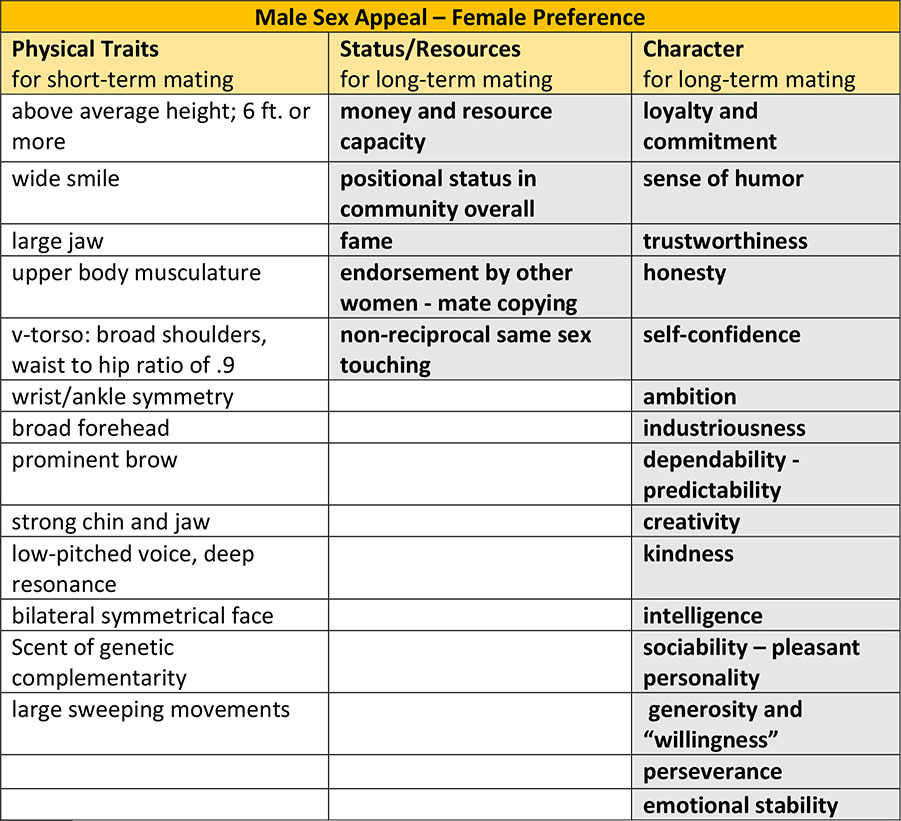What is Mate Selection Science?
 “Mate selection science” (MSS) is a colloquial term for a vital and robust area of study within the field of evolutionary psychology that is focused on how human beings choose sexual partners and mates. MSS describes the long-term and short-term mating strategies of men and women throughout time and in the context of modern culture and local environments. MSS studies intersexual selection — choice and trait preference for the opposite sex, and intra-sexual competition among the same sex for access to preferred mates.
“Mate selection science” (MSS) is a colloquial term for a vital and robust area of study within the field of evolutionary psychology that is focused on how human beings choose sexual partners and mates. MSS describes the long-term and short-term mating strategies of men and women throughout time and in the context of modern culture and local environments. MSS studies intersexual selection — choice and trait preference for the opposite sex, and intra-sexual competition among the same sex for access to preferred mates.
Our Minds Developed As Courtship Machines
In Mating Intelligence Unleashed (2013), authors Glenn Geher and Scott Barry Kaufman assert that “the domain of human mating is arguably the single most important behavioral domain of human functioning.” In The Mating Mind (2001), Geoffrey Miller argues “the most distinctive aspects of our minds evolved largely through the sexual choices our ancestors made. Our minds evolved not just as survival machines, but as courtship machines.” This is the science of mate selection.
Buss and Schmitt (“Sexual Strategies Theory: An Evolutionary Perspective on Human Mating,” 1993) proposed that humans have evolved sexually dimorphic adaptations related to “sexual accessibility, fertility assessment, commitment seeking and avoidance, immediate and enduring resource procurement, paternity certainty, assessment of mate value, and parental investment.” MSS addresses all of these topics.
Mate Guarding, Mate Copying, and Jealousy
MSS also studies mate guarding, “mate copying,” jealousy, courtship displays, and the evolution of the human mind for sexual selection (“mating intelligence”), including indicators of genetic “fitness” such as capacities for creative expression (artistic ability, musicality, sense of humor, and poetic dexterity of language). MSS (Miller, 2007) also explains how altruism in humans may have evolved as a specific kind of courtship display — generosity to others for the purpose of attracting mates.
Mating Intelligence Mechanisms – the Mind’s Reproductive System
Mating intelligence includes both courtship display mechanisms (“attractors”) and mating mechanisms (Geher et. al 2008). Geher and Miller (2008) see these two kinds of mechanisms as operating independently of one another, each predicting mating success.
Mating mechanisms include human universals in mating-relevant cognitive processes and individual differences in these processes – thus acknowledging that some people are better at these abilities than others (Glen Geher, Evolutionary Psychology 101, 2014).
Geher and Kaufman (2013) describe a myriad of mating mechanisms or cognitive processes that deal directly with mating-relevant issues, such as assessing cues of mate infidelity and deception, knowing the qualities desired by potential mates, reading the desires of the opposite sex, assessing one’s own mate value, and modifying mating strategy as a function of ecological conditions. Geher and Miller (2008) call these processes “the mind’s reproductive system.”
Mate Value and Mating Economy
MSS explains the influence of mate value determinations and assortative mating (like preferring like along many dimensions) in a marketplace or “mating economy.” MSS explains and uncovers the “perennial bargain” of resources and safety exchanged for sexual access.
Differences Between Men and Women
MSS also identifies (statistically aggregated) biological, psychological, cognitive, and behavioral differences between men and women, the science of beauty, and the specific differences between male and female sexuality and desire.
Monogamy, Non-monogamy, and Attachment
MSS may include the study of relationship agreements and forms of orientation, preference, and expressions such as same-sex attraction, monogamy, non-monogamy, and polyamory.
MSS may also address the parent-child attachment system and the mother-child caregiving system as it clarifies components of the mating system and uncovers distinct brain and hormonal operations.
What Does the Other Sex Want?
Last but not least, MSS attempts to answer the perennial question of mating, “what does the other sex want,” in three basic trait categories: physical traits, status/resources, and character. Charts below. (See Science of Attraction and Beauty for explanation and in-depth analysis.)
What Men Want

What Women Want
